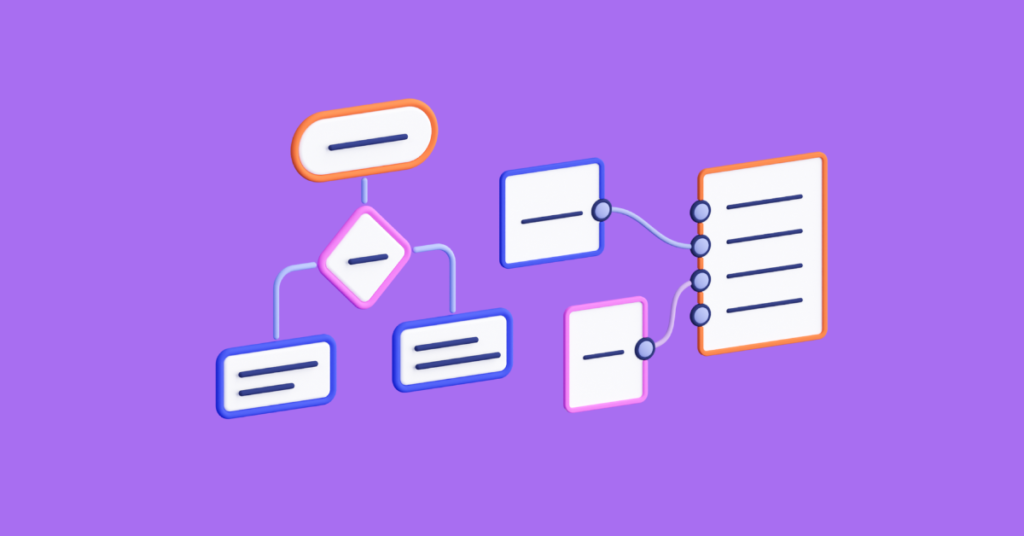You might know it as process engineering, or are more familiar with the phrase process improvement. Regardless of its name, business process optimization is a goal for many organizations but one that’s often hard to achieve. That’s because organizations often miss the key element to building a successful business process optimization campaign: accurate user data and analytics. That’s where Teramind comes in.
As the leading global provider of user behavior analytics, Teramind produces actionable, data-backed insights companies need to gain total visibility into their organization. These detailed, comprehensive data sets are the foundation for any business process optimization campaign; and can be used to make the informed, sweeping changes to existing systems that result in dramatic increases to productivity and significantly lowers costs. At the heart of any business process optimization efforts is accurate data.

How to Optimize Business Processes
There is no one way to optimize business processes across the board. Instead, how your organization can optimize their business processes lies within your organization’s user behavior data sets. Accurate user behavior data collection is an integral part of business process optimization. Overlooking this step or collecting inaccurate data often leads to a failed optimization campaign.
And this is where Teramind’s user behavior analytics shine. With its ability to collect user data, timestamped down to the millisecond, organizations can use Teramind to achieve their business optimization goals.
Let’s look at an example of a large multinational bank that utilized the Teramind platform to optimize their customer due diligence process.

Case in Point: How to Optimize Business Processes in the Financial Industry
Recently, a global financial institution using Teramind to protect against insider fraud reached out to us for help. Their customer due diligence (CDD) process was taking weeks longer than expected and they wanted to see if the same behavior analytics they use to protect against insider threats and fraud, could be used to analyze their department workflow to help streamline the process and ease the burden on their analysts.
Improving Customer Due Diligence with Business Process Optimization
As a large, multinational bank, the CDD department dealt with thousands of new customers each week and their customer workflows had multiple steps, each performed by a separate analyst. What the bank needed was a way to understand the distinct process activities of each analyst at every step. From start to finish, the customer due diligence process for a single account was taking 80-125 hours, but management had no way of telling what was happening behind the scenes and where the hold ups occurred. And since analysts work on more than one customer account at a time, they had no way of tracking the time spent on each customer account.
Teramind’s user behavior analytics can be applied to practically any use case from security to productivity to compliance by creating metrics for the granular activities of the workforce. For multi-step processes like the bank’s CDD workflow, these micro-metrics helped analysts understand every action that had to be performed at every step of the process.
To keep track and collect the necessary data, the bank deployed a Teramind feature called in-app field parsing. This allowed them to track each new customer account as it journeyed through the customer due diligence process. The bank also needed to be able to tell how much time was being spent in different sections and fields of the custom app analysts used to complete their due diligence tasks. Teramind also provided these data points using the same feature.

Saving Time and Money with the Power of Teramind Analytics
After deploying Teramind across the customer due diligence department, the bank instantly gained valuable insights into the due diligence process and noticed areas that could be improved.
One area management immediately identified a bottleneck was the process of how analysts had to access account information housed in another system. The bank noticed that analysts had to navigate to a different application and complete 12 actions in order to obtain the single piece of information they needed.
Empowered by the insights they received from the Teramind platform, management was able to rework this portion of the customer due diligence process to get the necessary information to their analysts faster. The bank successfully eliminated the first eleven unnecessary actions in order to get the CDD analysts the account information quicker and in just one click, saving hours of labor across the entire department.

The optimization of the 12-click process, when calculated across the bank’s thousands of employees and the multiple thousands of customer accounts they apply these processes to, fueled hundreds of thousands of dollars in savings for the bank’s labor costs over time and trimmed the time it took for an account’s customer due diligence to be completed. This optimization was just one example, and the bank continues to refine their processes over time with Teramind.
The user data analysis performed by the Teramind platform also informed their business process engineering efforts on a macro scale. Originally, management thought it took 80-125 hours to complete the due diligence of a single account, but after deploying Teramind discovered the process was closer to 20 hours. This allowed the management team to reorganize the CDD department appropriately based on its actual labor needs, bringing the bank further bottom line savings and increasing their output.
Why Organizations Need Business Process Optimization
This use-case only highlights some of the business process optimization results the bank was able to achieve. But these dramatic results aren’t isolated to just the bank, or even just to finance. Any organization across any industry can use a business process optimization strategy to enhance processes in efforts to increase revenues holistically by redefining systems. The key to this, however, is collecting accurate user data.
Improve systems with the right user data with Teramind


